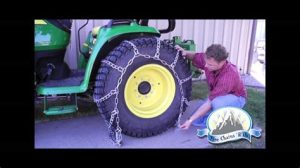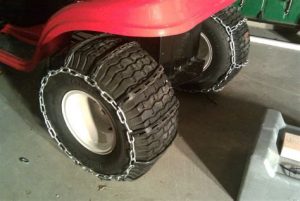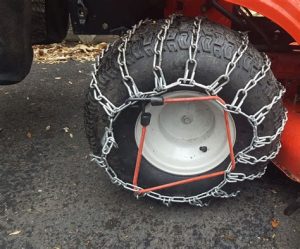Explore traditional and modern tire installation methods, innovations in automatic machines, tire bead assist devices, and advancements in tire pressure monitoring systems.When it comes to tractor tire installation, innovation is driving significant improvements. Traditional tire mounting methods, while historically effective, often come with various challenges, including safety risks and inefficiencies. As the agricultural sector evolves, so too does the technology available to install tires more effectively and safely. Automatic tire mounting machines are revolutionizing the way we approach this task, minimizing human error and physical strain on workers. Furthermore, innovative tire bead assist devices are enhancing the ease of mounting and demounting tires, making the process quicker and more efficient. Alongside these advancements, the development of tire pressure monitoring systems ensures optimal tire performance and longevity. In this blog post, we will explore these innovations and how they are transforming the landscape of tractor tire installation. Join us as we delve into the future of this essential agricultural practice.
Traditional tire mounting methods
Traditional tire mounting methods have been utilized for decades to maintain and replace tires on a variety of vehicles, including tractors. These manual techniques, while effective, often require significant physical effort and may lead to inconsistencies in the mounting process.
- Leveraging the tire onto the rim using tire levers to pry the bead over the rim edge.
- Inflation by using compressed air to push the tire bead into place against the rim.
- Manual alignment of the tire bead to ensure proper seating around the wheel flange.
These methods, although cost-effective, present certain limitations. For instance, they can be labor-intensive and may require multiple people to handle larger tires, particularly in the case of heavy-duty tractor tires. Improper technique can lead to damage to both the tire and the rim.
Additionally, traditional methods may not provide the consistency needed for safety and performance. As tire technology evolves, the need for more efficient, safe, and reliable mounting practices becomes clear, prompting innovations in the industry.
In summary, while traditional tire mounting methods remain widely used, their limitations have paved the way for the development of modern solutions that enhance safety, efficiency, and ease of use in tire installation.
Challenges in tractor tire installation
Installing tires on tractors can be a daunting task, especially when faced with the challenges unique to this heavy-duty machinery. One of the primary difficulties is the weight and size of the tires, which can make manual installation labor-intensive and time-consuming. Proper alignment is crucial, and failing to achieve this can lead to premature wear on the tires or even unsafe operating conditions.
Another significant hurdle in tractor tire installation is the type of equipment used. Traditional mounting techniques often involve a combination of manual labor and basic tools that may not provide optimal results. As a consequence, there is a risk of damage to the tires, rims, or even injury to the personnel involved. This raises the importance of using appropriately designed tools and machinery to minimize risks.
Additionally, the diverse soil types and conditions that tractors operate in can lead to different tire wear patterns. Depending on the agricultural application, the requirements for traction and durability can vary greatly, complicating the installation and selection process. Understanding these variables, along with the necessity for proper tire pressure maintenance, is essential for effective and safe operation.
Introduction of automatic tire mounting machines
The advent of automatic tire mounting machines has marked a significant shift in the tire installation industry. These machines are designed to enhance efficiency, safety, and accuracy during the tire mounting process, addressing many challenges associated with traditional methods.
One notable advantage of automatic tire mounting machines is their ability to reduce the physical strain on operators. Traditionally, tire installation required considerable manual effort, often leading to fatigue and injuries. With the automation of this process, operators can maintain higher productivity levels without the physical toll that often accompanies manual tire installation.
Additionally, automatic tire mounting machines boast advanced technology that ensures precise bead seating and minimizes the risk of damage to tires during installation. This improved accuracy not only prolongs tire life but also enhances overall vehicle performance. With integrated sensors and automated adjustments, these machines can adapt to a variety of tire sizes and specifications, making them versatile for different applications.
In summary, the rise of automatic tire mounting machines is transforming tractor tire installation, offering a blend of technological innovation and enhanced safety that benefits both operators and vehicle performance.
Innovative tire bead assist devices
In the world of tire installation, the role of tire bead assist devices has become increasingly important. These specialized tools are designed to help technicians achieve a seamless installation process, particularly for larger tires such as those found on tractors and heavy machinery. With the rise of advanced technology, various innovative solutions have emerged to streamline tire mounting.
One significant advantage of tire bead assist devices is their ability to reduce the physical strain on operators. Traditional methods often required considerable manual effort, which could lead to injuries and fatigue. In contrast, modern bead assist devices come equipped with hydraulic or mechanical features that ease the assembly and disassembly of tires. This not only enhances safety but also improves efficiency, enabling quicker turnaround times.
Moreover, the integration of smart technology into these devices has revolutionized their functionality. Many bead assist tools now utilize sensors that provide real-time feedback on the mounting process. This helps technicians ensure proper alignment and fitting without frequent discarding of mismatched tires.
Advancements in tire pressure monitoring systems
In recent years, tire pressure monitoring systems (TPMS) have seen significant advancements aimed at improving vehicle safety and efficiency. These systems not only provide real-time data but also enhance the overall driving experience through innovative technologies.
One of the most notable advancements is the transition from direct TPMS to indirect TPMS. Direct TPMS utilizes sensors installed within each tire, offering precise pressure readings. In contrast, indirect TPMS relies on wheel speed sensors to estimate tire pressure based on changes in wheel circumference. With the increase in direct systems, the accuracy of pressure measurements has improved significantly, reducing the risk associated with underinflated or overinflated tires.
Moreover, wireless technology has made it easier than ever for drivers to monitor tire pressure. Many modern vehicles come equipped with displays that show tire pressure information in real-time. The integration of smartphone applications further enhances this experience, allowing users to receive alerts and check pressure levels at their convenience. This level of accessibility ensures that drivers can maintain optimal tire health, leading to better fuel efficiency and enhanced safety on the road.
| TPMS Type | Advantages |
|---|---|
| Direct TPMS | More accurate readings; alerts for low pressure |
| Indirect TPMS | Cost-effective; does not require sensors |
| Wireless TPMS | User-friendly; integrates with mobile tech |
Frequently Asked Questions
What are the main innovations discussed in the blog post for tractor tire installation?
The blog post highlights advancements in materials, designs, and technologies that enhance the efficiency and safety of chains used during tractor tire installation.
How do new materials improve the performance of chains in tire installation?
New materials, such as high-strength alloys and synthetic fibers, improve durability and reduce wear and tear, ensuring a longer lifespan for the chains used in tire installations.
What role does technology play in modern chain designs for tractors?
Technology has led to the development of chains with features like automatic tensioning systems and smart sensors that monitor performance, making the installation process easier and more precise.
Are there environmental considerations associated with the new chain innovations?
Yes, many new chains are designed with sustainability in mind, using recyclable materials and processes that reduce carbon footprints during production.
What are some safety benefits of using innovative chains during tire installation?
Innovative chains often come with safety features such as improved grip, shock absorption, and fail-safe mechanisms that prevent slippage or breakage during operation.
Can these innovations be applied to other types of agricultural machinery?
Absolutely, many of the innovations in chains for tractor tire installation can be adapted for use in other agricultural machinery, enhancing their functionality and safety.
What should consumers look for when choosing chains for tractor tire installation?
Consumers should consider factors such as durability, ease of use, compatibility with their specific tractor model, and whether the chains incorporate the latest technological advancements.





